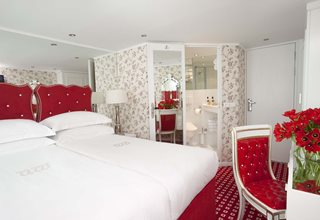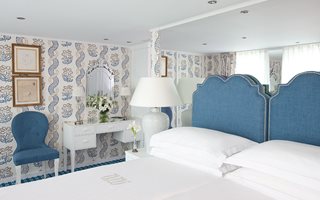
Europe and Mediterranean: Classic Christmas Markets Cruise
Uniworld Boutique River Cruises
A journey that will make you believe in holiday magic all over again. Once upon a time, people gathered on cobblestone squares to buy the special tools and ingredients they needed to make the treats of the season. They kept warm with hot spiced wine, music and games while they shopped and chatted with the local tradesmen. Those were the first Christmas markets, 500 years ago. Today, though the light comes from twinkling electric bulbs rather than torches, bonhomie and fun still prevail. Discover villages with fairytale houses and a friendly, festive atmosphere. Share traditional holiday goodies with the people who made them, as scents of cinnamon and roasting nuts fill the air. Sail through Christmas country trying Frankfurt's famous apple cider and Nuremberg's gingerbread. Cozy up to steaming mugs of glühwein (warm spiced wine) and do as the locals do by collecting different mugs from each stall and town you visit. Embrace the holiday spirit in Germany, the land where many Christmas traditions began, and find the magic of the season in the smiles that you meet along the way.

True All-Inclusive Boutique River Cruising™
All gratuities for onboard services
Unlimited fine wine, beer, spirits and nonalcoholic beverages**
Locally sourced cuisine
Shore excursions with local experts as your guide
Internet and Wi-Fi
All arrival and departure day transfers
Executive Member Benefit
Executive Members receive an annual 2% Reward, up to $1,250, on qualified Costco Travel purchases
Receive a US $ 50 shipboard credit per person (maximum US $ 100 per stateroom)♦
Digital Costco Shop Card
Member Exclusive: Digital Costco Shop Card with every Uniworld river cruise†
Onboard the River Queen
River Queen
Year Built: 1999
Year Refurbished: 2010
Double Occupancy Capacity: 132
River Queen features all river-view staterooms and is considered one of the most unique river cruise ships in Europe. The ship's exterior resembles the Grand River steamships of the 1930s, while the plush interior provides a classical elegance reminiscent of the famous Art Deco style.
Activities & Services (included in cruise)

Bars/Lounges
- Card Room
- Movies
- Fitness Center
- Sauna/Steam Room
- Bars/Lounges
- Concierge Desk
- Duty-Free Shops/Boutiques
- Elevators
- Safe Deposit Boxes
Activities & Services (available for an extra fee)

Full-Service Spa
- Beauty Salon
- Full-Service Spa
- Internet Center
- Self-Service Laundromat

Main Dining Room
Main Dining
Main Dining Room (open seating): This seating option allows you to choose when and with whom you dine. Menus are a blend of classic cuisine with a touch of contemporary elegance, and are created using only the finest and freshest ingredients often brought onboard from local ports of call. You'll be surrounded by the beauty of passing riverbank towns and villages.

Category: CL

Category: DE

Category: FB

Category: S

| Symbol | Description |
|---|

- Ship Name: River Queen
- Year Built: 1999
- Year Refurbished: 2010
- Year Entered Present Fleet: 1999
- Maximum Capacity: 132
- Number of Passenger Decks: 3
- Number of Crew: 36
- Officers' Nationality: European
- Ocean-View without Balcony: 62
- Capacity Based on Double Occupancy: 132
- Country of Registry: Switzerland
- Total Staterooms: 66
- Suites with Balcony: 4
- Crew/Hotel Staff Nationality: International
Costco Member Reviews

Terms & Conditions
*Price shown is per person based on double occupancy and is valid for select stateroom categories only. Click on the Terms & Conditions link below for details.
**Unlimited beverages include premium wine and premium spirits. Diamond List of wine and spirits is available at an additional cost.
♦Executive Members receive a US $ 50 shipboard credit per person, maximum US $ 100 per stateroom. Executive Member benefit is valid for primary cardholder only. Shipboard credit is per stateroom based on double occupancy. Shipboard credit will be applied to your onboard account. Any unused portion of the credit is nontransferable, nonrefundable and not redeemable for cash.
†One Digital Costco Shop Card per room/stateroom, per stay. The exact amount of the Digital Costco Shop Card will be calculated during the booking process. The Digital Costco Shop Card promotion is nontransferable and may not be combined with any other promotion. A Digital Costco Shop Card will arrive by email approximately 10 days after the start of your cruise. Click on the Terms & Conditions link below for additional information.
Ship's registry: Switzerland
Digital Costco Shop Card
This booking includes a Digital Costco Shop Card which will arrive by email one to two weeks after you return from your vacation. The Digital Costco Shop Card is a convenient payment option in our warehouses and on Costco.ca.







